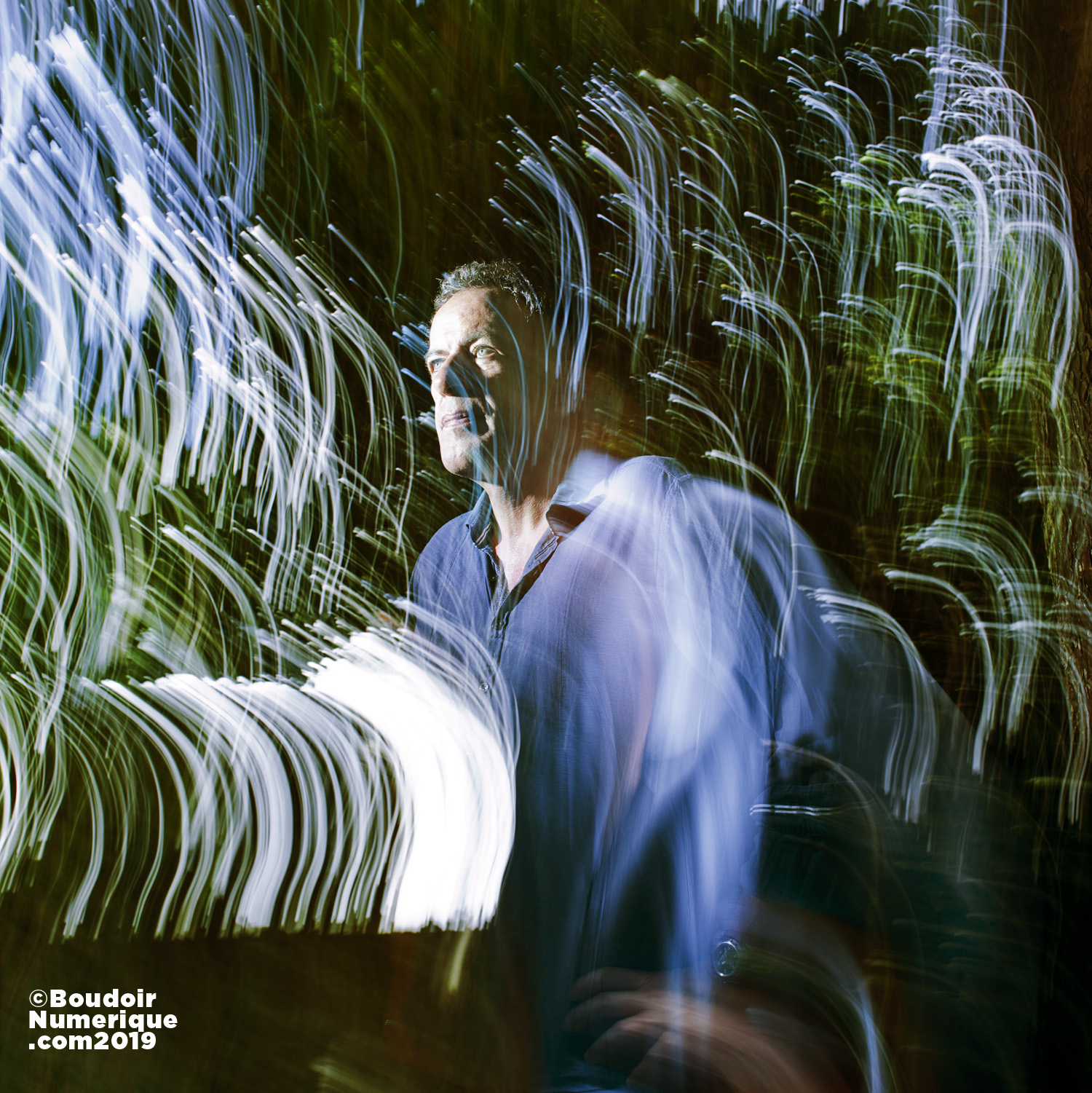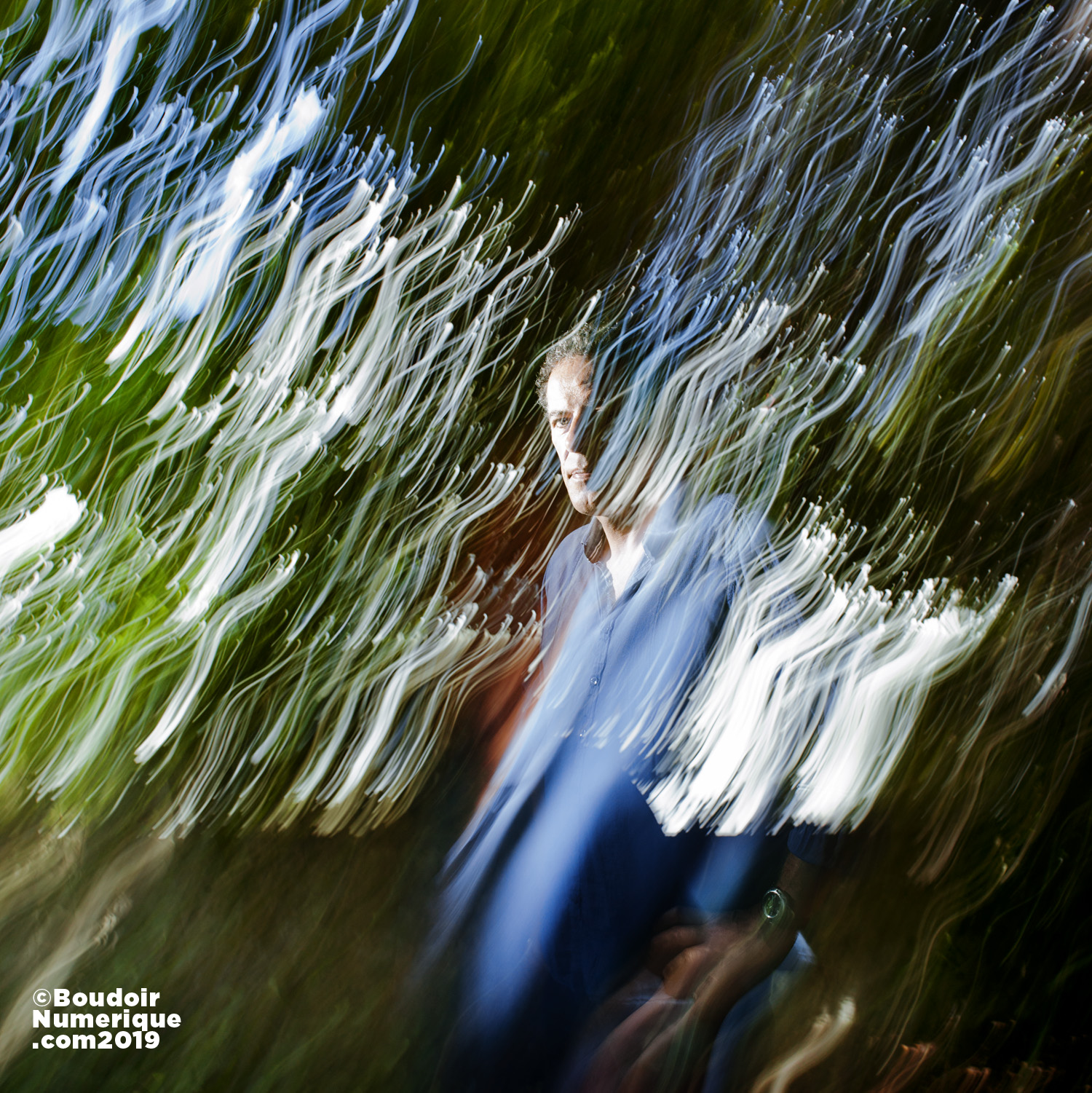Intrigued by fashionistas wandering, phone in hand, in the huge landscapes of Balenciaga’s last campaign (see the article “Balenciaga under tech influences”), Le Boudoir Numérique wanted to know more about the artistic approach of his photographer, Jean-Pierre Attal. A visual "ethnographer" who, for four months, totally immersed himself "in this great passion", revisiting the urban codes of one of his previous series, "Ethnographic Landscapes", in 2012.
By Ludmilla Intravaia
Le Boudoir Numérique : You sign the new Balenciaga fall 2019 campaign, inspired by one of your previous photographic series, "Ethnographic Landscapes", in 2012. For this project, you have immortalized, in their daily activities, salarymen from La Défense, to then transplant them in vast landscapes, in the United States in particular. Why this interest for employees of this French business district ?
Jean-Pierre Attal, photographer : What interested me in the salarymen of Ethnographic Landscapes, was the man of the city, the urban individual from our civilization, beside whom one pass in the street, without paying him attention, without seeing him, actually. It is he who fascinates me since the beginning of the 2000s, in my project "Monograph of the social masses", in my works on genetic codes. Humans share common points but also have singularities. What is at stake in my work is this dichotomy between, on one hand, global issues, La Défense employees with their dress codes and social codes, wearing gray suits, with their briefcases, headsets, phones, etc. and, on the other hand, their extreme differences as individuals. By getting closer to them, by highlighting them, I explore this duality of anonymous intimacy that can be perceived in the street, in the public space of the city.
Photographer Jean-Pierre Attal, on June 25, 2019, in Issy-Les-Moulineaux (© Lionel Samain for Le Boudoir Numérique)
Why did you move your salarymen into large natural areas ?
To focus on humans, I wanted to take these anonymous men and women, symbol of the work world and urbanity, out of their usual context. All of a sudden, they are no longer in the subway, or on the sidewalk but in a grandiose landscape. There, the vision is shifted, the spectator wonders : what do these people in suits and ties do in these natural spaces? So, we look at them differently, in any case, we pay attention. Then everyone does what he wants with these pictures.
You do not offer any personal interpretation to the audience ?
I consider myself an ethnographer, not an ethnologist or researcher. I collect visual data from the city, in a raw, statistical way. I'm doing a sociological survey but I do not come to a conclusion. The viewer draws his own or not. I use the material of the city, show the people in it. More precisely, I model, in my own way, the urban stereotype, everyone in suits and ties at La Défense, everyone with headsets, typing text messages ... In this sense, the titles of my series say long on my inspiration, like for instance "Modeling the urban stereotype", in 2000, the true foundation of my work, where I accumulated car windshields, on Paris ring road, in a large format photographic kaleidoscope. From a distance, one contemplate the swarming, the mosaic of an urban scene. Close up, one distinguish each unique story. This work triggered everything for me, opened everything.
Balenciaga Fall 2019 campaign by Jean-Pierre Attal (copyright 2019 Jean-Pierre Attal/Balenciaga)
In Balenciaga’s campaign, models wearing the brand’s clothes have replaced the salarymen of La Défense, in the natural environment of Morocco, the island of Lanzarote or the public space of the city. How was this shooting different from that of Ethnographic Landscapes ?
The two projects are quite close, except that we present the clothes of a collection, in a commissioned work. I was able to model the characters’ attitudes, as I wanted, with total artistic freedom. The idea of recreating, with models in a studio, the urban codes and street action behaviors, already observed in Ethnographic Landscapes (walking on the street, telephones, etc.), was very exciting. It was a bit unusual for models who, in general, take the pose and receive directions from the photographer. My only instructions were to walk as they do in the street. I really liked this alliance between the internally studio work and the landscapes outdoors. We are no longer in the sociological inquiry, as proposed in Ethnographic Landscapes, since the chosen characters are models, muses. If I compare this campaign to cinema, I would say that it is a fiction, an allegory that delivers its share of dreams and questions, in different ways. We were motivated by the desire to propose a campaign that differs from others, with a refreshing vision, which sticks to modernity, to the contemporaneity of the world. Given the positive feedback on social networks, for example, I believe the goal is achieved.
How did you live this experience ?
I experienced it as an artistic residency, as if an art center gave me carte blanche to carry out a project for a certain period of time. Shootings of landscapes in Lanzarote, of the models in the studio, then new trip to Morocco, combining characters and landscapes..., the project was long to implement. For four months, I totally immersed myself in this great passion, with the Balenciaga team, models, hairdressers, make-up artists, who all participated in the creation of the campaign. I felt this experience as an extraordinary moment of my existence.
Balenciaga Fall 2019 campaign by Jean-Pierre Attal (copyright 2019 Jean-Pierre Attal/Balenciaga)
In the pictures of Ethnographic Landscapes and those of the Balenciaga’s campaign, we see people with headsets or communicating with their mobile phone. According to you, does technology bring men closer to each other, or on the contrary, separate them ?
I told you, I am an ethnographer, not a philosopher. In my work, I do not propose opinions or solutions. Nevertheless, on a more personal level, I find, during my travels in the city, that people are more and more dependent on their phones. To the point of having an accident, while writing text messages walking. But I will be careful of the pitfall of criticism, saying that nowadays individuals spend their lives on their cell phones, without communicating with each other, whereas before they red the newspaper and met on the subway. In the city, people enjoy protective anonymity, which most of them like. We do not know what they are doing behind their phone, no more than what they were doing behind their newspapers. Do they read their e-mails? Do they exchange with others? Do they work? After, do they go home and have a party or do they stay alone and sad? Everything is possible, according to each individual. Except for people who are addicted to video games or to Facebook and Instagram, technology is a tool that does not fundamentally change the personality of people.
So, no willingness to denounce in your images ?
No. In my project entitled "Cells", I photographed office buildings, seen from the outside. Many people have interpreted these photos as a denunciation of the world of work, everyone in his alveolus, like a bee. But I have nothing against bees, or people who go to work in the office. People who work at La Défense told me that I had managed to show them as they had never seen themselves. I show the city but I have no lessons to give anyone. Then the question arises as to whether I photograph these buildings to prove to me that I am happy not to be inside? It's possible.
Photographer Jean-Pierre Attal, on June 25, 2019, in Issy-Les-Moulineaux (© Lionel Samain for Le Boudoir Numérique)
In a global context where fashion and technology keep coming closer, prestigious labels are increasingly using digital artists, such as Balenciaga, for example, with Canadian Jon Rafman, who questions the impact of technology on our society (see the Boudoir Numérique’s article : "Balenciaga under tech influences"). What do you think of this phenomenon ?
I think it's great. It is a fairly recent and very stimulating movement. Balenciaga is my first fashion campaign. I had never photographed models. Fashion was neither in my professional skills nor in my personal preoccupations. My contact with fashion was limited to magazines that you occasionally find at the doctor's. And I had the impression that it was always the same thing : a model smiling in a studio, in beautiful clothes. But it's not enough to make pretty pictures anymore. Brands are in search of meaning, want to see something else, something new that tells a story, that clings to other areas of exploration, such as sociology, for example. They want to stand out and to embark people in a film, with a real scenario. For instance, a fashion show like Vetements at McDo had never been done before (the men's spring-summer 2020 collection of the brand founded by Demna Gvasalia, Balenciaga’s artistic director, was presented in the fast food restaurant of the Champs -Elysees, June 20, 2019, AN). It is very interesting to see labels like Balenciaga and Vetements explore new territories. And that's just the beginning.
* Below, pictures of Balenciaga Fall 2019 campaign by Jean-Pierre Attal (copyright 2019 Jean-Pierre Attal/Balenciaga)
* Jean-Pierre Attal website is here.
* Continue reading on Balenciaga with these Boudoir Numérique articles : “Balenciaga under tech influences” and “Cardi B, Lady Gaga and Dita Von Teese, all 3D fashionistas”.












